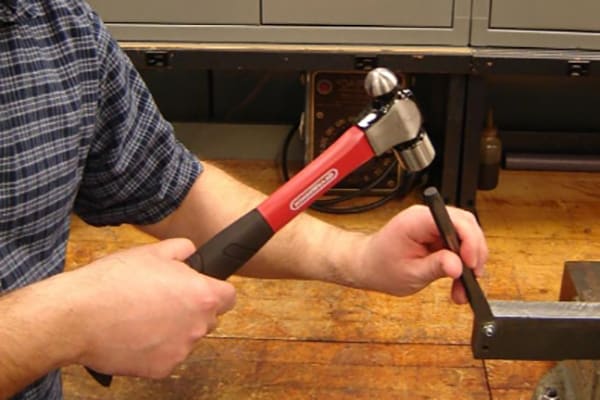The ball peen hammer, a staple in many toolboxes, has a distinctive design and an interesting history. Known for its rounded peening end, this hammer has played a crucial role in metalworking and other trades for centuries. But how did it get its unique name?
Etymology and Definition
The name "ball peen hammer" is derived from its distinctive shape and function. The term "peen" refers to the part of the hammerhead that is opposite the flat striking face. In the case of the ball peen hammer, this end is rounded, resembling a ball. The word "peen" itself comes from the Old English word "pǣn," which means to beat or strike, particularly in the context of shaping metal. Thus, the "ball peen" refers to the rounded shape used for peening, which involves hammering to toughen or shape metal.
Historical Background
The ball peen hammer dates back to the early days of metalworking, where it was a vital tool for blacksmiths and metalworkers. Traditionally, these hammers were used to strike and shape hot metal on an anvil, a process known as peening. This method was essential for tasks such as forging swords, armor, and various metal tools. The ball end was particularly useful for creating rounded shapes and textures on the metal surface.
Development and Uses
Over time, the ball peen hammer evolved to meet the needs of various trades. Here are some key developments and uses of the tool:
- Metalworking: In metalworking, the ball peen hammer is used to shape and strengthen the metal. The peening process helps to reduce stress and increase the toughness of the metal, making it less prone to cracks and fatigue.
- Machining and Engineering: Machinists and engineers use ball peen hammers for tasks that require precision and control. The hammer is often employed to drive chisels and punches, as well as to shape soft metal components.
- Riveting: One of the traditional uses of the ball peen hammer is riveting, which helps to form and secure rivets by rounding their heads. This technique was especially important in the construction of metal structures, such as bridges and ships.
- Jewelry Making: In jewelry making, the ball peen hammer is used to create textures and patterns on metal surfaces. The rounded peen allows for detailed work that is essential in crafting intricate designs.
Design and Variations
The ball peen hammer comes in various sizes and weights, tailored to specific tasks. The handle can be made of wood, metal, or fiberglass, providing different levels of durability and comfort. The head, typically made of hardened steel, ensures the hammer can withstand repeated use without deforming.
Some common variations of the ball peen hammer include:
- Straight Peen Hammer: Features a peen that is parallel to the handle, used for tasks that require striking in tight spaces.
- Cross Peen Hammer: Has a peen that is perpendicular to the handle, ideal for starting panel pins and tacks.
- Diagonal Peen Hammer: Combines the features of both straight and cross peen hammers, offering versatility in shaping metal.
Modern Significance
Despite the advent of advanced machinery and tools, the ball peen hammer remains a vital instrument in many workshops and industries. Its enduring design and multifunctional capabilities ensure its continued relevance. Whether for professional use or DIY projects, the ball peen hammer is a testament to the enduring ingenuity of simple, effective tools.
Conclusion
The ball peen hammer’s name and design are deeply rooted in the history of metalworking and toolmaking. From its origins in shaping hot metal to its modern applications in engineering and jewelry making, this tool has proven its versatility and durability. Understanding its name and historical context highlights the importance of traditional tools in contemporary practices, underscoring the timeless nature of the ball peen hammer.
Post time: 07-29-2024






